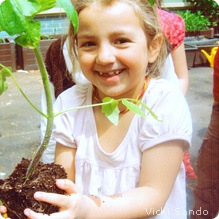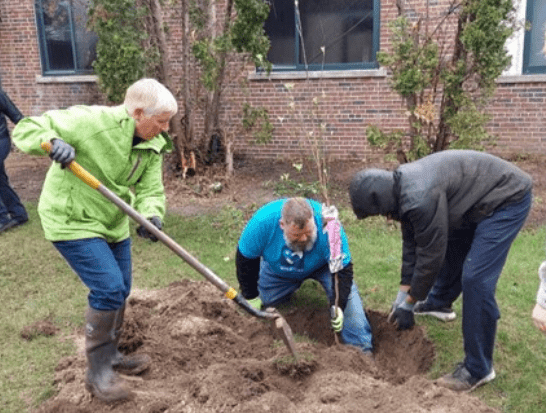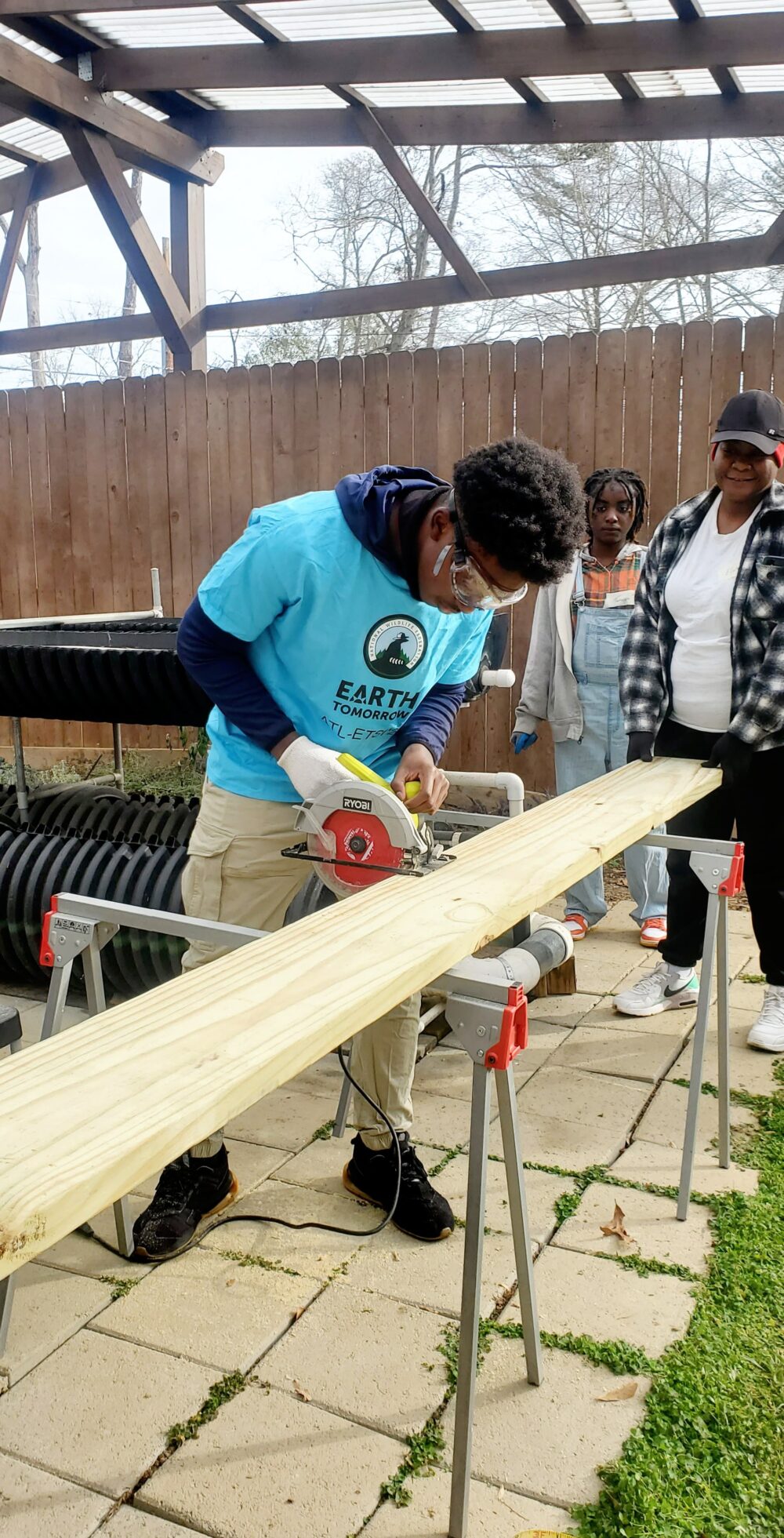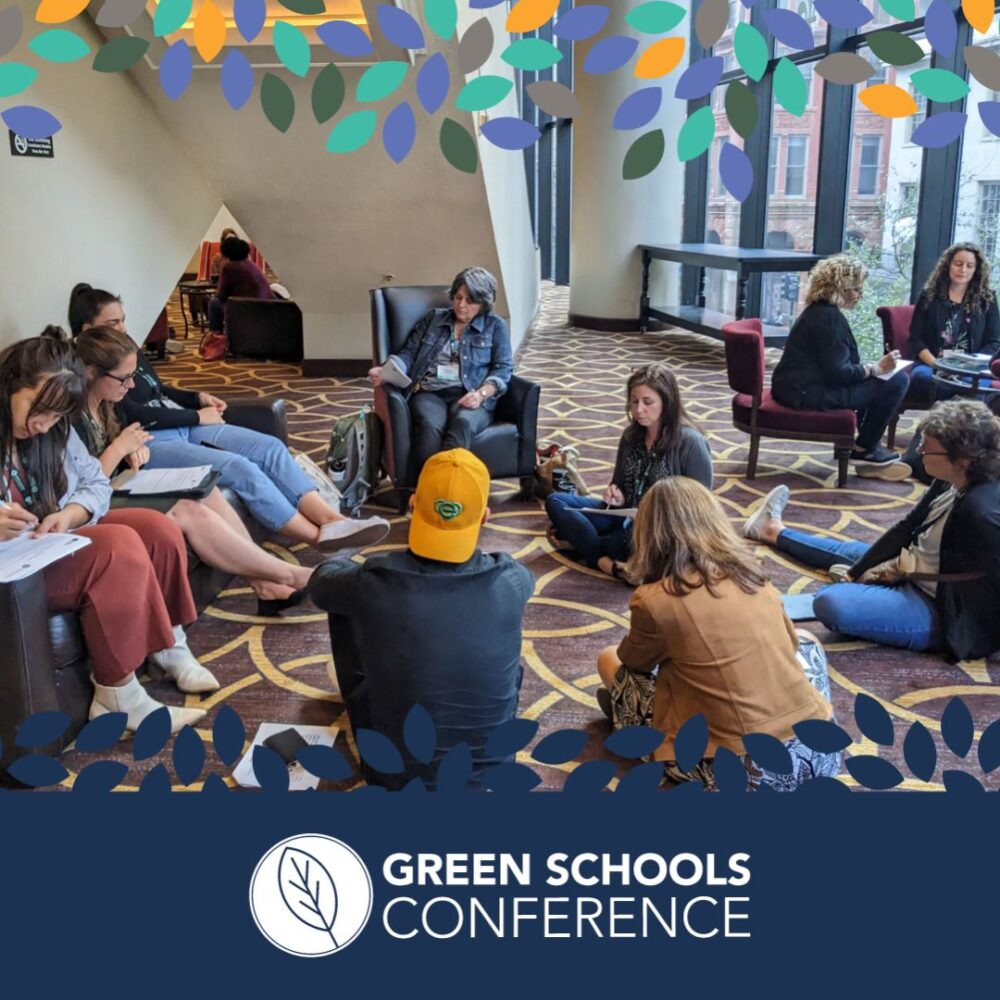We have much more to do and your continued support is needed now more than ever.
Parents: Green Your Child’s School
 Every day, parents lob the same question at their children: “What did you do at school today?” Instead of a shoulder shrug or a grunt, imagine if you got one of these responses:
Every day, parents lob the same question at their children: “What did you do at school today?” Instead of a shoulder shrug or a grunt, imagine if you got one of these responses:
- If your child were a student at Lanier Middle School in Fairfax, Virginia, you might hear how her Eco-Action team calculated that by turning the lights down, the school could save $26,000 on its annual utility bills.
- At Savannah Country Day School in Georgia, your child would explain how the school collects rainfall and uses the water to tend organic gardens.
- In Armagh , Pennsylvania, you might hear about the waste-reduction campaign at United High School—and see the fantastic outfits students have designed from recycled goods for their annual “Trashin’ Fashion Show.”
- And at PS41 in New York City, your kid might let you in on one mother’s vision to engage students with nature. She started with a small container garden, and now she’s getting the whole school raising funds for an extensive green roof that will serve as an outdoor learning lab and an oasis of green in the heart of the city.
 All of these amazing stories come from Eco-Schools USA, a program that helps K-12 public, private, and charter schools in the U.S. green their school grounds, buildings, educational programming, andstudent experience. The program strives to make environmental awareness and action intrinsic parts of the life and culture of each school.
All of these amazing stories come from Eco-Schools USA, a program that helps K-12 public, private, and charter schools in the U.S. green their school grounds, buildings, educational programming, andstudent experience. The program strives to make environmental awareness and action intrinsic parts of the life and culture of each school.
In return, students are building terrific life skills. They’re learning through hands-on experiences. They’reresearching new technology and calculating the savings that result from conserving water and from energy and reducing waste. They’re communicating and negotiating in groups of peers and adults.
And the payoff: As schools’ environmental footprints shrink, academic performance and enthusiasm for learning improve and expand.
TIPS TO GET STARTED
Eco-Schools USA is an international program hosted in the United States by National Wildlife Federation.Want to launch Eco-Schools USA at your child’s school? Here’s how to begin:
- The Eco-Schools program is a team effort. Get others—including students, parents, teachers, and administrators—on board. Learn about the benefits of the program and spread the word.
- Recruit a teacher or administrator to “champion” the program and register the school.
- Continue gathering a core group of committed team members as you plan ways to involve the rest of the school community.
- Once the program is off and running, you—along with other parents and volunteers—can boost its success by serving on the Eco-Action team or providing assistance and expertise on particular projects.
HOW DOES IT WORK?
To become certified as an Eco-School, a school registers online and progresses through a series of seven steps. The school can then apply for one of the three Eco-Schools awards: the Bronze, Silver, or Green Flag award.
THE SEVEN STEPS TO BECOMING AN ECO-SCHOOL
THE EIGHT PATHWAYS
As you chart a course for your Eco-Schools journey, you choose from among eight pathways:
![]()
![]()
![]()
![]()
![]()
![]()
![]()
![]()
Want to learn more? Browse the Eco-Schools USA website to learn how the program works.Says Cate Arnold, a teacher at Boston Latin School, “Our students are gaining incredible skills in leadership, project management, and public speaking. I also think they find it really engaging and meaningful to put their efforts into something that is actually making a [positive] difference … in this world.”





















